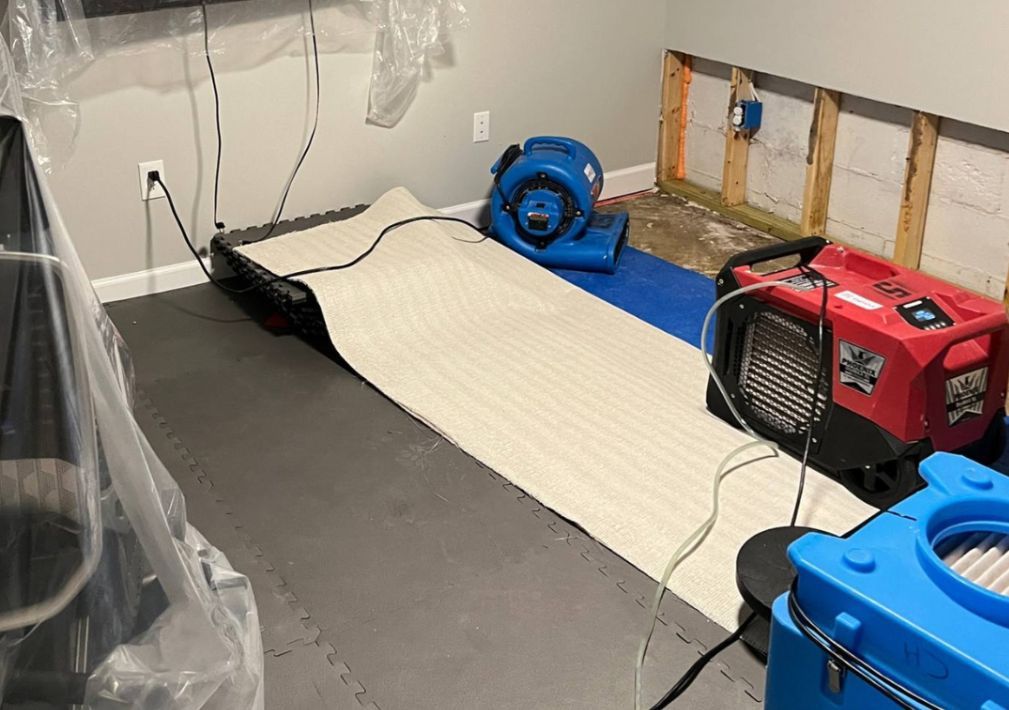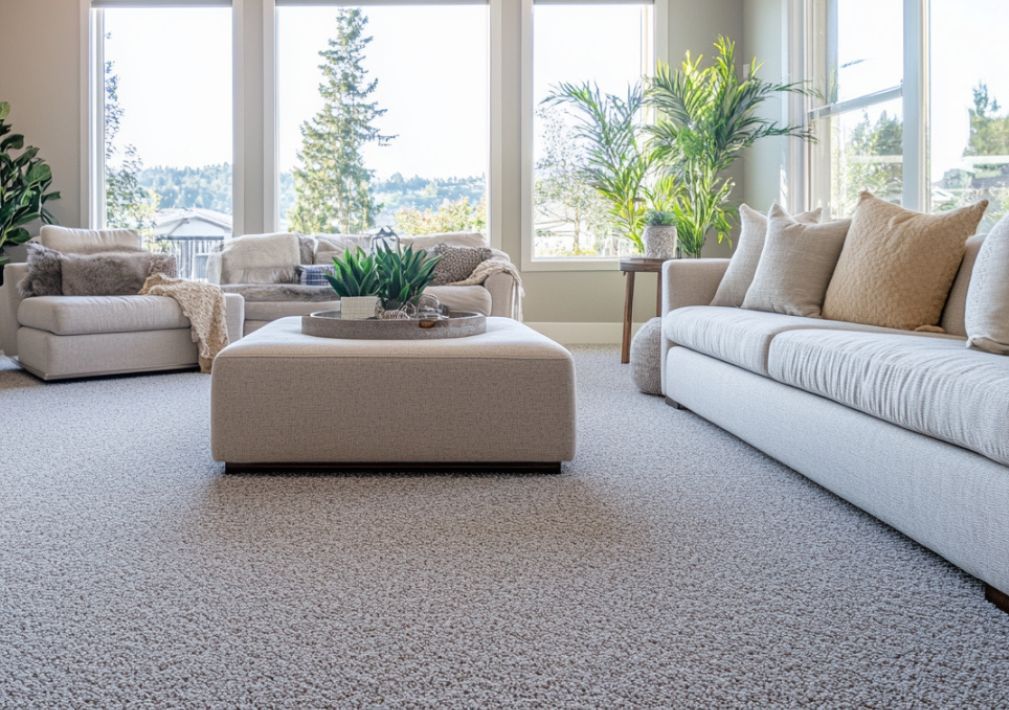What Is the Average Cost of Water Damage Restoration in Baton Rouge, LA?

Table of Contents
- 1. Understanding Water Damage Restoration Costs
- 2. Steps Involved in Water Damage Restoration
- 3. How to Reduce Water Damage Restoration Costs
- 4. Additional Factors That Influence Water Damage Restoration Costs
- 5. Does Homeowners Insurance Cover Water Damage Restoration?
- 6. Common Mistakes Homeowners Make After Water Damage
- 7. Why Choose Voda Cleaning & Restoration of Baton Rouge?
- 8. Voda Cleaning & Restoration of Baton Rouge Offers Expert Water Damage Restoration Near You
- 9. Frequently Asked Questions About Water Damage Restoration Costs
The average cost of water damage restoration in Baton Rouge, LA, ranges from $1,200 to $5,000, depending on factors like severity, water category, and affected areas. Homeowners can expect to pay around $3,000 for mid-range damage restoration services.
Understanding Water Damage Restoration Costs
Water damage restoration pricing varies due to multiple factors, including the type of water damage, the extent of damage, and the restoration process required. Voda Cleaning & Restoration of Baton Rouge offers comprehensive solutions tailored to your specific situation.
Factors Affecting Water Damage Restoration Costs
- Type of Water Damage
- Clean Water (Category 1): Least expensive to restore, often from burst pipes or appliance leaks.
- Gray Water (Category 2): Contains contaminants and requires additional sanitation, increasing costs.
- Black Water (Category 3): Highly hazardous, typically from sewage backups or floodwater, requiring extensive restoration efforts.
- Extent of Damage
- Minor leaks: $1,200 – $2,500 Includes limited water exposure and minimal structural damage.
- Moderate damage: $2,500 – $5,000 Affects multiple areas, requiring drywall repair, flooring replacement, and mold prevention.
- Severe flooding: $5,000+ Involves large-scale structural drying, mold remediation, and full restorations.
- Materials Affected
- Carpet and flooring: $200 – $500 per room for cleaning and drying.
- Drywall repair: $500 – $2,000 depending on the extent of moisture penetration.
- Mold remediation: $1,000 – $4,000 based on contamination levels and affected surfaces.
Steps Involved in Water Damage Restoration
At Voda Cleaning & Restoration of Baton Rouge, we follow a thorough process to restore your property efficiently:
- Inspection and Assessment: Our team conducts a full assessment, using moisture meters and infrared cameras to detect hidden damage.
- Water Extraction: We use industry-leading pumps to remove standing water quickly, preventing further damage.
- Drying and Dehumidification: High-powered air movers and dehumidifiers dry out affected materials to avoid mold growth.
- Cleaning and Sanitizing: We apply antimicrobial treatments to eliminate bacteria and ensure safe living conditions.
- Restoration and Repairs: Includes drywall replacement, flooring repairs, and repainting to return your home to pre-damage condition.
How to Reduce Water Damage Restoration Costs
- Act quickly to limit structural damage and mold growth. Water damage worsens over time, so prompt action can save you thousands in repair costs.
- Call Voda Cleaning & Restoration of Baton Rouge as soon as possible for an emergency response. Our quick response time minimizes damage and restoration expenses.
- Check for insurance coverage to offset restoration expenses. Many homeowner insurance policies cover water damage, but reviewing your policy beforehand helps avoid surprises.
- Invest in home maintenance like regular plumbing inspections and gutter cleaning. Keeping pipes in good condition and ensuring proper drainage can prevent leaks and flooding.
- Use water sensors and leak detection systems to prevent unnoticed damage. These devices alert homeowners to small leaks before they become costly disasters.
- Improve ventilation in high-moisture areas such as basements, kitchens, and bathrooms to prevent condensation buildup that can lead to mold.
- Regularly inspect your roof for leaks, missing shingles, or cracks that can allow water infiltration, especially after heavy storms.
- Install a sump pump in flood-prone areas to quickly remove excess water and prevent structural damage.
Additional Factors That Influence Water Damage Restoration Costs
- Size of the Property: Larger homes require more extensive drying and repairs, increasing costs.
- Type of Flooring: Hardwood floors can be more expensive to restore compared to carpeting or laminate.
- Specialty Services: If mold remediation, biohazard cleanup, or content restoration is needed, costs will increase accordingly.
- Accessibility of the Damage: If water damage is in hard-to-reach areas such as crawl spaces or behind walls, additional labor and specialized equipment may be necessary.
- Time of the Year: Costs may be higher during hurricane season or colder months when frozen pipes are more common, increasing demand for restoration services.
Does Homeowners Insurance Cover Water Damage Restoration?
Insurance coverage depends on the cause of water damage:
- Covered: Sudden events such as burst pipes, accidental leaks, or roof leaks from storms. These events are typically considered unavoidable and fall under most standard policies.
- Not Covered: Flood damage from rising waters (requires separate flood insurance), gradual leaks due to lack of maintenance, and negligence-related issues. Damage that results from poor upkeep, such as ignoring a slow leak, is usually excluded.
- Additional Considerations: Some policies may have limitations on mold remediation or require additional endorsements for full coverage. Reviewing your policy and consulting with your provider can help clarify what’s included.
Common Mistakes Homeowners Make After Water Damage
- Delaying the Restoration Process: The longer water sits, the worse the damage becomes. Mold growth can begin within 24 hours, leading to expensive remediation efforts.
- Not Contacting Professionals: DIY restoration often leads to incomplete drying and mold issues. Many homeowners assume using a fan or towel is enough, but without professional drying equipment, moisture lingers.
- Ignoring Structural Issues: Hidden water damage weakens drywall, floors, and wooden structures over time. A small leak may not seem urgent, but prolonged exposure can cause irreversible damage.
- Skipping Professional Assessments: A thorough inspection ensures all affected areas are identified and treated properly. Moisture can seep into subflooring, insulation, and electrical systems, requiring professional evaluation.
- Throwing Away Important Documentation: Always document damage with photos and videos before restoration begins. This evidence is crucial for insurance claims and potential reimbursement.
- Using the Wrong Cleaning Products: Some household cleaners can react negatively with contaminated water, spreading bacteria instead of eliminating it. Professional-grade sanitization is essential for safety.
Why Choose Voda Cleaning & Restoration of Baton Rouge?
- 24/7 Emergency Services: We respond quickly to minimize damage and reduce costs.
- Certified Technicians: Our team is IICRC-certified, ensuring industry-standard service.
- Advanced Equipment: We use the latest drying technology to restore properties efficiently.
- Comprehensive Services: From water extraction to complete reconstruction, we handle everything.
- Customer Satisfaction Guaranteed: We prioritize your safety and home integrity.
Voda Cleaning & Restoration of Baton Rouge Offers Expert Water Damage Restoration Near You
If you’re dealing with water damage, don’t wait! Contact Voda Cleaning & Restoration of Baton Rouge today for professional, reliable restoration services. Our team is ready to help you restore your property efficiently and affordably.
Frequently Asked Questions About Water Damage Restoration Costs
How much does it cost to dry out a home after water damage?
According to Voda Cleaning & Restoration of Baton Rouge, drying costs vary from $500 to $2,500, depending on the affected area size and required equipment.
What are the biggest hidden costs of water damage restoration?
Unseen damage such as mold growth, weakened drywall, and electrical issues can add unexpected costs to water damage restoration.
How can I tell if my home has long-term water damage?
Look for warped floors, musty smells, bubbling paint, and increased humidity levels, all indicating possible long-term water exposure. Contact us to know more.
More Blogs
Categories

